

In a world where cyber threats multiply by the nanosecond, the allure of a cybersecurity degree is strikingly clear. But what's hidden behind those glossy brochures might just blow your mind!
As digital borders blur, and our virtual lives entwine deeply with reality, understanding cybersecurity is no longer optional—it's essential. The stakes are higher than they’ve ever been, promising not just jobs but the safeguarding of our future.

So, what's lurking behind these academic walls? For starters, a significant portion of the curriculum focuses on not just passive defence but proactive threat hunting. Statistics reveal that 70% of cyber threats go unnoticed until it's too late. Imagine the power of turning that tide through education. But that’s not even the wildest part…
Another jaw-dropping revelation is the role artificial intelligence is playing in these programs. Students aren’t just taught theory; they are designing AI algorithms that predict cyber threats before they happen. It’s like gifting them a crystal ball for the digital world. But the surprises don’t stop here…
What happens next shocked even the experts, paving the way for a new era of cybersecurity education like never seen before...
Did you know that cybersecurity degree programs are crafting the truest digital warriors? This isn’t just IT; it’s a revolution in the arts of defence. The strategic patterns woven into these curriculums are akin to a digital chess game where every move counts, blending psychology with technology in an unprecedented dance.

While coding remains the backbone, students are increasingly drawn to ethical hacking modules. These classes are not simply for the tech-savvy; they harness creativity and strategy to expose security weaknesses. An unexpected fact: many graduates land roles with intelligence agencies, drawn by their ability to think like potential threats.
Network security is more than just shoring up defences; it’s architecting impenetrable bastions fortified by mile-high firewalls. These students aren’t just earning degrees; they’re crafting the future defense toolkit of the digital age, designed to stay ahead of potential threats.
The true showstopper is the insight into cyber law. Imagine a lawyer crossed with a code-breaker, ready to battle in the courtroom and the boardroom. Cyber law specialists are now coveted hires, reflecting a world where legislation tries to keep pace with technological evolution.
Entering a cybersecurity degree program is not just a commitment to education; it's a ticket to enter one of the fastest-growing job markets globally. A surprising fact: the demand for cybersecurity experts is expected to grow by 33% in the next decade, a meteoric rise that few other sectors can match.

What many don’t realize is the lucrative nature of these roles. Cybersecurity graduates often find themselves earning high five-figure salaries fresh out of university with pathways to six-figure incomes as career trajectories quickly climb.
With the rise in security breaches and data theft, companies are willing to pay top dollar to secure their infrastructures. Some niche roles, especially those tied to ethical hacking and threat modeling, can command salaries comparable to senior executive positions in other fields.
But there’s one more twist… the positions aren't just restricted to private corporations. Public sector roles, offering competitive packages, can sometimes be even more rewarding for those with a passion for protecting national security.
The role of industry partnerships in the structuring of cybersecurity degree programs is nothing short of revolutionary. Collaborations with tech giants such as Google and IBM establish curriculums that are not just theoretical but employ cutting-edge technologies many only dream of using.
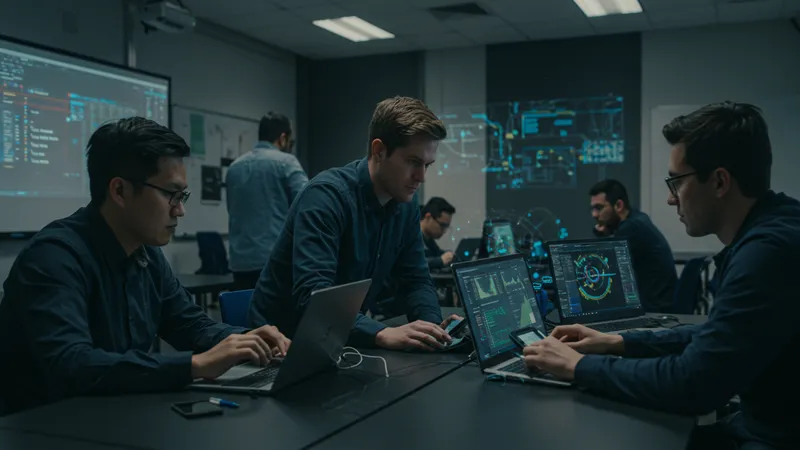
Google’s recent initiative embeds students into live project settings, offering real-time insights into their future roles. The experience of handling actual data breaches and strategizing in real-time? Priceless.
The long-term partnerships with hardware developers host labs using the most sophisticated gadgets, allowing students to monitor and manage security systems that directly mirror those in the corporate world. These partnerships are not partnerships; they are stepping stones into lucrative careers.
What you read next might change how you see this forever: these collaborations are not just about exposure; they are transforming curriculums into breeding grounds for the next generation of tech titans.
While the digital world seems borderless, a cybersecurity degree offers students a passport through the corridors of worldwide data protection. Programs now highlight the critical importance of understanding cyber practices across different continents, given the global nature of our digital lives.
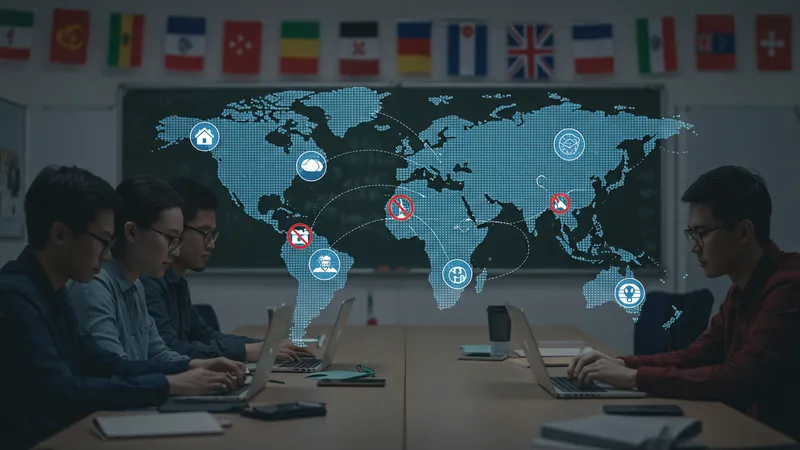
International laws on data protection vary significantly, and knowledge of these laws is exhorted in many a classroom discussion. And yes, some programs even send students abroad to get a firsthand understanding of these differences.
The beauty of this education lies in its adaptability—skills that are transferable and required across almost every conceivable industry worldwide. That means not just opportunities domestically, but a chance to work in silicon hubs around the globe.
But there’s more… graduates from these programs often find themselves collaborating across multiple time zones, solving global problems as part of virtual teams in record time.
When we think of internships, we think of basic office tasks and coffee runs. But in cybersecurity? It’s a different ball game! Students are often entrenched in roles that mirror full-time positions, experiencing first-hand what it means to be on the front lines of cyber defence.

These internships are not just enlightening; they are fast-tracks to career offers post-graduation. With 90% of cybersecurity interns receiving full-time job offers upon completion, this hands-on experience is invaluable.
Companies utilizing interns have adapted to a mentor-guided structure, providing crucial support while expecting fresh perspectives on solving challenging cybersecurity enigmas.
This isn’t just experiential learning; it’s a testing ground for future decisions, innovations, and even policy-making in some cases. The real-world experience often culminates in internship projects being deployed within companies to fight actual threats.
Discussion about a cybersecurity degree isn’t complete without exploring the meteoric rise of interdisciplinary studies within the programs. As security becomes everyone's job, insights from psychology, sociology, and even criminology are becoming integral in decoding the criminal mind.

This fusion of disciplines creates well-rounded professionals capable of spotting the nuances of cybercrime and implementing solutions that involve more than just technical brilliance. It’s a deep dive into the human psyche coupled with digital acumen.
Programs thus allow for minors or electives that align with criminal justice, behavioral analysis, and even management—creating cybersecurity experts who are strategically, technically, and emotionally intelligent.
But there's more: this interdisciplinary approach is instrumental in addressing one of cyber defenses' biggest challenges—insider threats. These programs might hold the answers to not just defending, but predicting and preventing future cyber attacks.
Gone are the days of dry lectures and dusty textbooks. Cybersecurity programs are reshaping education by employing gamification and interactive platforms. Imagine game-based learning where you’re the protagonist fighting off a fictional cyber attack!

The integration of virtual reality (VR) adds an exciting dimension to the curriculum. Students use VR to simulate attacks, respond to scenarios, and test strategies in safe but realistic environments, making abstract concepts tangible and engaging.
Through these immersive teaching methods, students don’t just learn—they experience. They’re placed right at the heart of the action, making sense of complex theories by applying them to their digital adventures. No longer memorizing; they are strategizing!
What you read next might change your attitude towards traditional education: these strategies have started revolutionizing other disciplines, from mechanics to music. The boundary-pushing innovation doesn’t stop at cybersecurity—it’s a tidal wave of change!
While cybersecurity programs are packed with potential, they’re not without their own set of challenges. An interesting problem these degrees face is the ever-evolving nature of cyber threats, which can outpace academic planning.

The solution? Curriculum developers constantly refine course material to keep pace with real-time developments, a task both daunting and exhilarating. This means educators often liaise with industry leaders who provide up-to-the-minute insights into the latest threats impacting various industries.
But the surprises don’t stop there: there's the challenge of keeping students ethically grounded while training them in hacking techniques. Institutions foster a robust ethical framework nurturing students' critical questioning of the "why" just as much as the "how".
And just wait till you learn about the innovative student-led initiatives born from these challenges, including hacker clubs and community outreach programs, that provide not just skill sharpening but community building on a grand scale!
As artificial intelligence engrains itself deeper into our lives, the symbiotic relationship between cybersecurity and AI is reshaping degree programs. Expect AI tools that automatically learn and combat new threats, allowing students to design and test algorithms that are always one step ahead of hackers.
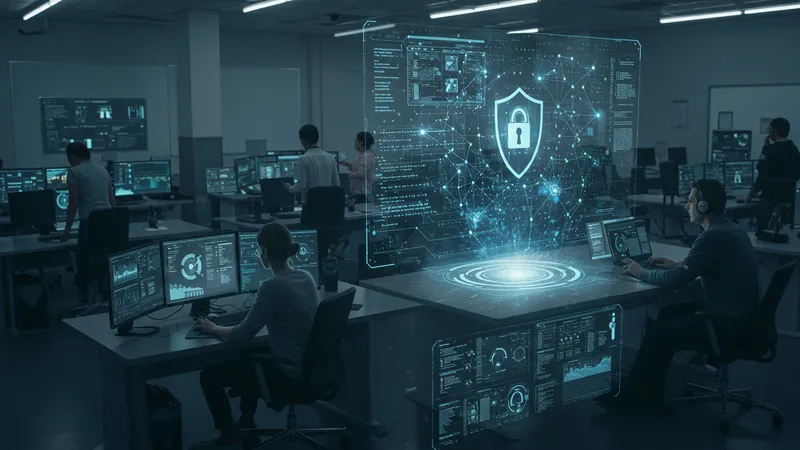
Courses now incorporate AI ethics, exploring unprecedented challenges AI presents in cybersecurity, including the autonomy of decision-making processes, biases in AI learning models, and even AI-driven attacks.
This future-forward curriculum equips students with unparalleled skills, readying them to redefine security paradigms in an AI-prevalent world. We can only expect the demand for such expertise to explode as industries further depend on AI-driven solutions.
But just as enlightening is what comes next: the convergence of AI and cybersecurity is forming a frontier that’s yet to reveal its full potential, opening new realms of possibilities and unforeseen challenges.
The integration of IoT (Internet of Things) devices in cybersecurity education is accelerating at breakneck speed. From smart appliances to wearable tech, these devices are now classroom staples, serving both as learning tools and subjects of study.
How they function, communicate, and can be exploited is at the heart of cybersecurity curricula. Understanding how to defend these tiny gate-crashers is crucial, as they often represent the lowest-hanging fruit for attackers.
The hands-on experience with IoT gives students a reality check on security vulnerabilities, while educators guide them through the creation of test networks and penetration testing approaches.
What you learn next might redefine predictions: with IoT expansion forecasted to skyrocket, knowledge of securing these seemingly innocuous devices has never been more critical, anticipating future trends and threats.
Cybersecurity programs aren’t just limited to classroom learning; the extracurricular activities attached are just as impactful. There is something transformative about these clubs and hackathons that prepare students for the realities they will face beyond academic walls.
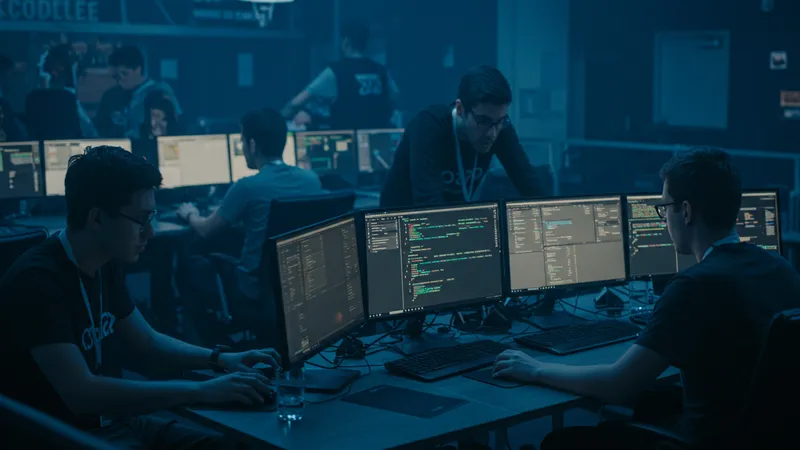
Competitive events, like cyber-defence tournaments, offer real-world exposure under pressure, encouraging the application of classroom knowledge in simulated, exhilarating scenarios. They cultivate teamwork, leadership, and innovative problem-solving like nothing else.
Furthermore, alliances formed through club memberships create networks that can last a lifetime, contributing to unexpected job offers and collaborations. Students share expertise, hone skills, and explore niche interests together.
This electric atmosphere instills a sense of excitement and urgency never fully captured in a syllabus. These extracurricular opportunities signal a significant leap in student preparedness, shaping the tech innovators of tomorrow.
In a twist many may not expect, cybersecurity students are starting to play critical roles in shaping digital policies. Their involvement does not just stop at being learners; they are active participants in policy formulation processes.

Their fresh perspectives and developing expertise make them valuable resources for advisory boards working on digital regulation frameworks, often directly impacting the strategies that governments and corporations adopt.
Some have taken this further, joining or establishing grassroots advocacy groups aimed at influencing public opinion, regulations, and corporate practices around data protection and privacy.
What you read next may astonish you: some of the most bold and forward-thinking laws in the digital space today were incubated in university settings where faculty guided students towards influencing the dynamics shaping our digital world.
The academic contributions from cybersecurity students are not just academic exercises; they are turning heads with their relevance and depth. A new wave of self-driven research papers is attracting attention from industry and academe alike.

These papers frequently tackle real-world problems, providing insights into current security challenges and innovative potential solutions that many have yet to realize. Research fairs and conferences feature these papers, allowing them to receive national and international acknowledgment.
Research usually tackled by seasoned veterans is now often spearheaded by students, collaborating with professors and industry mentors to usher in practical solutions that push the boundaries of traditional learning outcomes.
The interest generated isn’t just academic—it ripples into the corporate world where companies actively seek out these papers for insights on next-wave technology, further connecting academia with industry.
Graduating with a degree in cybersecurity opens myriad pathways that go beyond what many expect. The paths diverge into technical roles such as security analyst or penetration tester, and surprising hybrid positions that blend traditional arts with cybersecurity.
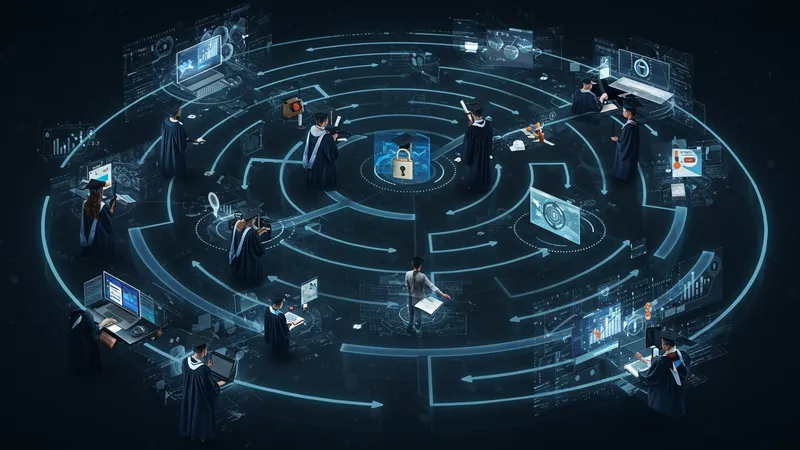
Emerging roles labeled as cyber consultants focus on teaching non-tech roles to navigate and secure their digital interfaces, reflecting how cybersecurity skills are infiltrating diverse career options.
There’s more: cybersecurity entrepreneurship is on the rise, adding competitive technology startups that carve out solutions for emerging security concerns, founded and led by graduates who aim to reshape the landscape.
These multifaceted paths aren’t just opportunities; they signal the flexibility of a security-based education to morph and adapt in ways that even seasoned professionals didn’t anticipate, proving the degree’s versatility.
The world of cybersecurity degrees holds endless surprises and only scratches the surface of potential like a concealed Pandora's box. Each layer reveals prospects that few anticipate and fewer still exploit fully. Whether it’s through interdisciplinary insights, cutting-edge technology, or unexpected career paths, students are handed the keys to a digital kingdom still waiting to be discovered. This transformation begins now—why wait to jump into the dynamic world of digital defence? Share this illuminating journey, and let others uncover the concealed power of the cybersecurity realm.